Diane de Beauvau-Craon, the last rebel princess: ‘I did a lot of drugs, drank a lot of booze, slept with a lot of queers, and I’m still here’
The Spanish-French aristocrat was a muse for Andy Warhol and Roy Halston, a friend of Robert Mapplethorpe, and in a polyamorous relationship with Karl Lagerfeld and Jacques de Bascher. At 67, she has published a memoir of sex, drugs and debauchery. ‘I learned to destroy myself through pleasure and rebuild myself through love,’ she says
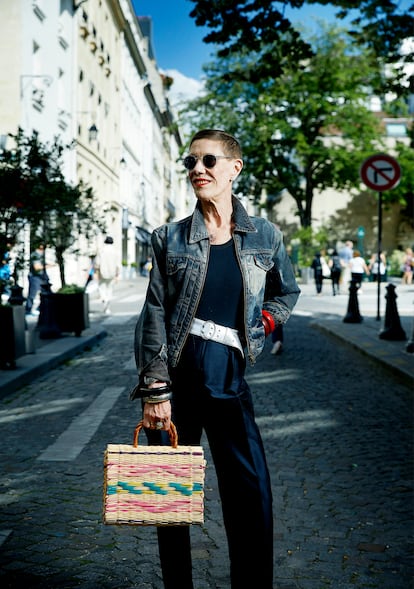
Diane de Beauvau-Craon was born twice. First, on August 2o, 1955, when her mother, the Spanish aristocrat María Cristina Patiño y Borbón, gave birth at Belvédère clinic, an upscale maternity hospital on the outskirts of Paris. Second, on November 7, 2001, in the same city, when doctors at Cochin Hospital saved her from almost certain death. She was admitted in an unconscious state, weighing barely 70 pounds, her body consumed by drugs and alcohol. “I was born again that day,” Beauvau-Craon says, speaking to EL PAÍS by phone from her home in Naples, a villa with views of Mt. Vesuvius. Her voice, raspy from years of smoking, doesn’t match her figure: her body seems almost brittle, but she bursts with vitality.
As she talks, the French-Spanish aristocrat is packing her bags to spend a few days at her apartment in Paris, and then at her other getaway, a chalet near the resort town of Gstaad, in the Swiss Alps. In photographs, Diane evokes an air of Nancy Cunard, surrealism’s tragic muse: a le garçon haircut, slightly feline eyes, red lips, wrists adorned with bracelets, and a demeanor that exudes elegance and eccentricity. Like Cunard, Beauvau-Craon has lived a life of privilege – a singular and frenetic existence. She grew up between her family’s luxurious Parisian duplex on the Avenue de Foch, with neighbors like Greek tycoon Aristotle Onassis; the château de Haroué, a castle in the Lorraine region of France; and Quinta Patiño, her maternal grandfather’s estate in Alcoitão, Portugal. But none of these places ever really felt like home to her. In 1973, at 18, Diane moved to New York, joining the city’s decadent world of art, fame and fashion. She worked as an advisor for fashion designer Roy Halston, was a muse for Andy Warhol and a close friend of photographer Robert Mapplethorpe, and partied with Bianca Jagger and Margaux Hemingway at Studio 54.
“My parents were very unhappy during the time they were together,” she remembers. “They got married to please their families, but they never loved each other. They separated when I was two years old. So it was clear to me from a very young age that I didn’t want to live like them.” Diane’s father was Marc de Beauvau, the seventh and last Prince of Craon, a friend of Charles de Gaulle, and a knight of the Order of the Legion of Honor. Her mother was the daughter of Bolivian tycoon Antenor Patiño, nicknamed El Rey del Estaño, and the Duchess of Dúrcal, a cousin of King Alfonso XIII. “I was educated in the best boarding schools. I was supposed to marry a man with an illustrious surname, have children and lead a boring life. But by the time I was 12 or 13, I knew that none of that would make me happy,” she says frankly, as she lights another cigarette. “It’s the only vice I still have,” she confesses, before resuming the story of her life. This summer, Beauvau-Craon’s memoir, Sans départir (Éditions Grasset), was published in France. In English, the title might be something like, “Never Give Up.” It’s a nod, she says, to the motto of her family, the Beauvau-Craon dynasty, and its more than 500 years of history. But the idea also encapsulates her own approach to life.
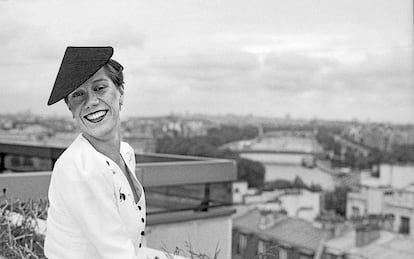
Through platonic romance, Beauvau-Craon found freedom from the conventional, bourgeois destiny her family had planned for her. In 1973, her friend Thierry Beherman, the son of a wealthy Belgian industrial dynasty, proposed to her and she accepted. “Thierry was handsome, intelligent, eccentric... and gay. I only liked gay men, and he was in love with my androgynous physique. He always told me I had the face of a fag but the body of a woman,” she says, laughing. “I’ve always liked homosexuals more than heterosexuals. To this day. I feel closer to them mentally and physically and they make me feel special. When I was young, straight men scared me. And they thought I was crazy. Gay men, on the other hand, saw me as a little sister, or like a brother. They understood me, and I understood them.”
The Beauvau-Craons welcomed the news of their daughter’s engagement and treated the couple to a vacation in New York. At 18, Diane and her fiancé checked into a hotel on the Upper East Side, in a suite overlooking the Metropolitan Museum of Art. But the wedding never happened. The Belgian heir returned to Europe, and Diane stayed in Manhattan. At a party, she met Roy Halston, one of the most famous American fashion designers of the era. Desperate to find a reason not to return to Paris, she asked him for a job. And Halston, seduced by the prospect of having an aristocrat on his payroll, agreed, and offered her a contract as a consultant. “I like the way you wear your clothes, it’s very original, you can give me your opinions on my collections,” she remembers him saying. And so Diane began her working life in New York City, and was paid “in kind.” “He wouldn’t pay me, but he would give me jewelry from Elsa Peretti [a Tiffany & Co. designer]. A real salary would have made me feel like a prisoner. The idea of getting paid in jewelry increased my desire to work with him tenfold.”
Halston celebrated his new hire by hosting a dinner with his friends: Mick and Bianca Jagger, Joe Uller, Elsa Peretti, Fred Hughes and Andy Warhol. That night, the pop artist gave Beauvau her new title: “Princess de Bobo,” a play on the difficulty Americans had pronouncing her French surname. But soon the name Diane de Beauvau-Craon was on everyone’s lips in New York. Warhol was fascinated by her ambiguous appearance and adopted her as a kind of apprentice. “Andy was one of my best friends. He could see my innocence, and he took care of me. He was aware of my fragility and so he was very protective of me. He used to escort me home. He would tuck me into bed and wish me goodnight,” she says.
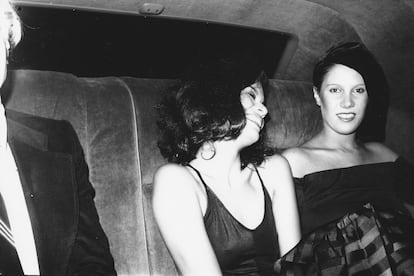
In November 1977, Diane was featured on the cover of Interview, the Warholian magazine and official newsletter of “The Factory,” the pop artist’s studio and party headquarters. Christopher Makos took the photograph and Warhol edited the image himself – the only time in the history of the publication that he personally intervened in the cover’s design. Inside the issue was an extensive interview with the “princess,” accompanied by black and white portraits taken by a young Robert Mapplethorpe. The photographer and model hit it off immediately.
“Then, my life in New York turned into a dream,” Diane says. She spent her days working with Halston and her nights partying with Warhol and his coterie. Sometimes she would accompany Mapplethorpe to the Mineshaft, New York’s most famous fetish club, located in the city’s Meatpacking District. It was a secret, shady place where guests used pseudonyms and dressed up as cops, cowboys and bricklayers. “I was usually the only woman in those places, and I like that,” she says. “As I was saying before, I’ve always been more comfortable around gay guys than women. I don’t understand women, or they don’t understand me. They hate me or reproach me for being so free.” Eventually, she moved into Mapplethorpe’s loft for a time. “It was three months of pure happiness. We were like brother and sister, or like two brothers or two siblings.” The arrangement ended when she started dating film director Oliver Stone, and Mapplethorpe got jealous.
The princess remembers those years as a never-ending party punctuated by cocaine and white wine, to “keep the beat.” It was the era of Studio 54 disco and a new white pill called quaaludes, a sedative-hypnotic similar to barbiturates. “There was only one downside to those,” she says. “The next day, we wouldn’t remember anything we’d done the night before.” Diane has no problem talking about her former addictions. She started doing drugs when she was 12 years old. The first substance she tried was trichloroethylene, a cleaning solvent. When she would use it for her arts and crafts games, the air in her bedroom would become saturated with a sweet smell that made her “head spin.” When her parents figured out what was going on, they sent her to several rehab clinics in France and Switzerland. “But the damage had already been done. I had tried drugs and I really liked them,” she says.
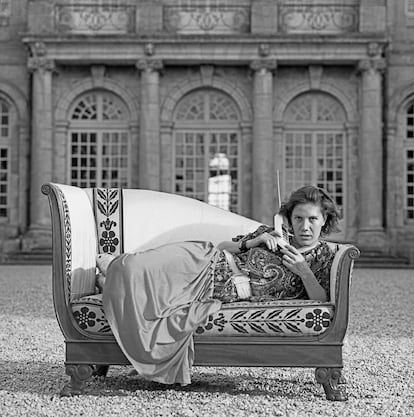
At 15 years old, as Diane was shuffled between hospitals and Swiss boarding schools, she tried acid and cocaine for the first time. “My goal at the time wasn’t to destroy myself, but just to have fun and experience danger,” she says. “I’ve never considered myself to be a self-destructive person. I’m passionate about life. But I like to see how far I can go.” Diane spent a period during her adolescence in a mental health hospital in the Garches neighborhood of Paris, pompously called the Château de Garches, an institution run by a doctor that Beauvau-Craon describes as “more sadistic than therapeutic.” There, she was subjected to electroshock therapy, a practice that in 2016 the World Health Organization defined as a form of torture. Diane blames her mother for that chapter of her life: “She never took care of us.”
At the hospital in Garches, the doctors tried to convince her that she was crazy. In fact, Diane says, her whole life people were trying to put that idea into her head. “Everyone told me I was insane, but I just thought, ‘Thank God I’m not like them.’ I was young and naïve.” But in the heyday of 1970s New York, she found her place in the world. “Halston was charming. I saw the TV series about him [starring Ewan McGregor and directed by Ryan Murphy] and I had to stop watching by the third episode. He wasn’t like that. He was beautiful, generous and tremendously talented,” she says – the only moment during our interview where she seemed annoyed and indignant. “Unfortunately, people don’t understand what life was like in the seventies and eighties. Getting high and drinking was the norm. There’s no freedom anymore. Now you have to be very careful about everything you say and do. We live like we’re in a prison.”

Diane has always shunned convention. When she turned 21, she quit her job with Halston and launched her own clothing label. Everyone who was anyone in New York attended her debut: Truman Capote, Diana Vreeland, Andy Warhol, Bob Colacello, Robert Rauschenberg, Robert Mapplethorpe, Margaux Hemingway, Timothy Leary, Mick and Bianca Jagger, Lee Radziwill, Cristina Onassis, Nan Kempner, Steve Rubell, Ian Schrager. Halston didn’t come, but he sent her a bouquet of flowers with a kind note wishing her luck. Her collection was a disaster. It would be her first and last fashion show.
Devastated and overwhelmed by her failure, Diane fled to Morocco. In Tangier, she met Ahmed Mohamadialal, a seductive Moroccan revolutionary educated in Paris and a friend of Bernard-Henri Lévy, Jean-Paul Enthoven and Gilles Hertzog. Soon after meeting Ahmed, Diane became pregnant, married him, and converted to Islam. “My happiness didn’t last long. Ahmed changed radically. In his mind, he thought that I belonged to him because we were married and because I had adopted his religion.” In the memoir, Beauvau-Craon writes about one instance, in April 1980, after giving birth to her son, when she suffered a beating at the hands of her husband. After that incident, she fled the country with the help of Ahmed’s sister, Lalla Aïcha. It would take her five years to get her child back.
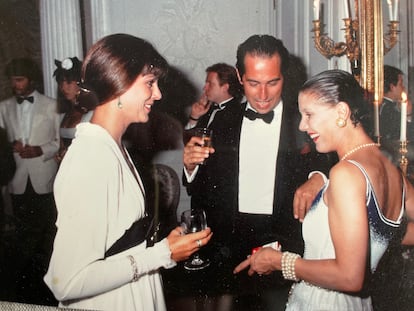
After returning to Paris, Diane started working for the couturier Hubert de Givenchy. But the two never really got along, and he eventually fired her for skipping a fashion show to party with Eric Clapton’s bass player. Then, Diane began a relationship with the handsome enfant terrible Jacques de Bascher, Karl Lagerfeld’s boyfriend. Lagerfeld, a German fashion designer, gave his blessing to the polyamorous relationship. “Karl was never in love with me and I was never in love with him. The priority for both of us was to love Jacques. For us it was a very normal situation,” Diane says. Their first year was “idyllic,” and the dynamic between the three of them was “wonderful,” she says. “I accepted Jacques’ homosexuality with joy and amusement. I never felt jealous of his gay relationships because I knew I couldn’t provide him with what a man could. I didn’t consider them infidelities. And in Karl, I encountered a most indulgent fatherly protection. I learned a lot from him.”
Jacques was a free soul. Diane thought she was, too. But she quickly realized that he was just as jealous as the other men she’d met in her life, and they broke up. In 1986, Bascher was diagnosed with AIDS and the two resumed their friendship. Three years later, Paris’s most renowned enfant terrible died in her and Lagerfeld’s arms, in a hospital in the French capital. “He wanted it that way,” she says. “It was the most beautiful intimate relationship I ever had. I was in love with him and he was in love with me. I was the only woman in his life.”
Diane and Karl stayed great friends. “Jacques’ death brought us very close,” she says. “I suffered a lot from that loss. For a while I felt like a survivor and I kept asking myself the same question: ‘Why hadn’t it been my turn?’ I lost too many friends.” Warhol, Halston, Mapplethorpe… The last to leave was Lagerfeld, the “kaiser of fashion,” who passed away in February 2019. The princess stayed at his side until he died. “Recently someone joked that they should build a monument to me: I did a lot of drugs, drank a lot of alcohol, slept with a lot of gays, and I’m still here. I’m the last of my kind.”
Now, at 67 years old, Diane de Beauvau-Craon leads a peaceful life, living between her Neapolitan villa, her Parisian apartment in Saint-Germain-des-Prés, and her Swiss chalet. She has been married and sober for two decades. “When I was high or drunk, I couldn’t read a book because I couldn’t understand a single sentence. I couldn’t go to museums because I’d just be seeing everything double. Now I lead the normal life I didn’t have when I was young. I have a husband I love and a simple existence, as one should at my age,” she says. “I had the time of my life, I met some very interesting people, and, when my body said ‘enough,’ I stopped. As I say in the book, I learned to destroy myself through pleasure and rebuild myself through love.”
Sign up for our weekly newsletter to get more English-language news coverage from EL PAÍS USA Edition
Tu suscripción se está usando en otro dispositivo
¿Quieres añadir otro usuario a tu suscripción?
Si continúas leyendo en este dispositivo, no se podrá leer en el otro.
FlechaTu suscripción se está usando en otro dispositivo y solo puedes acceder a EL PAÍS desde un dispositivo a la vez.
Si quieres compartir tu cuenta, cambia tu suscripción a la modalidad Premium, así podrás añadir otro usuario. Cada uno accederá con su propia cuenta de email, lo que os permitirá personalizar vuestra experiencia en EL PAÍS.
¿Tienes una suscripción de empresa? Accede aquí para contratar más cuentas.
En el caso de no saber quién está usando tu cuenta, te recomendamos cambiar tu contraseña aquí.
Si decides continuar compartiendo tu cuenta, este mensaje se mostrará en tu dispositivo y en el de la otra persona que está usando tu cuenta de forma indefinida, afectando a tu experiencia de lectura. Puedes consultar aquí los términos y condiciones de la suscripción digital.
More information
Archived In
Últimas noticias
There is as much life left to discover on planet Earth as that which is already known
Dozens presumed dead, around 100 injured in fire at Swiss Alps bar during New Year’s celebration
Is porn for women different from conventional porn? We spoke to those who make it
Cartagena de Indias is sinking: What can the city do to mitigate it?
Most viewed
- Reinhard Genzel, Nobel laureate in physics: ‘One-minute videos will never give you the truth’
- Sinaloa Cartel war is taking its toll on Los Chapitos
- David King, chemist: ‘There are scientists studying how to cool the planet; nobody should stop these experiments from happening’
- Oona Chaplin: ‘I told James Cameron that I was living in a treehouse and starting a permaculture project with a friend’
- The Interoceanic Train, the Mexican alternative to the Panama Canal











































